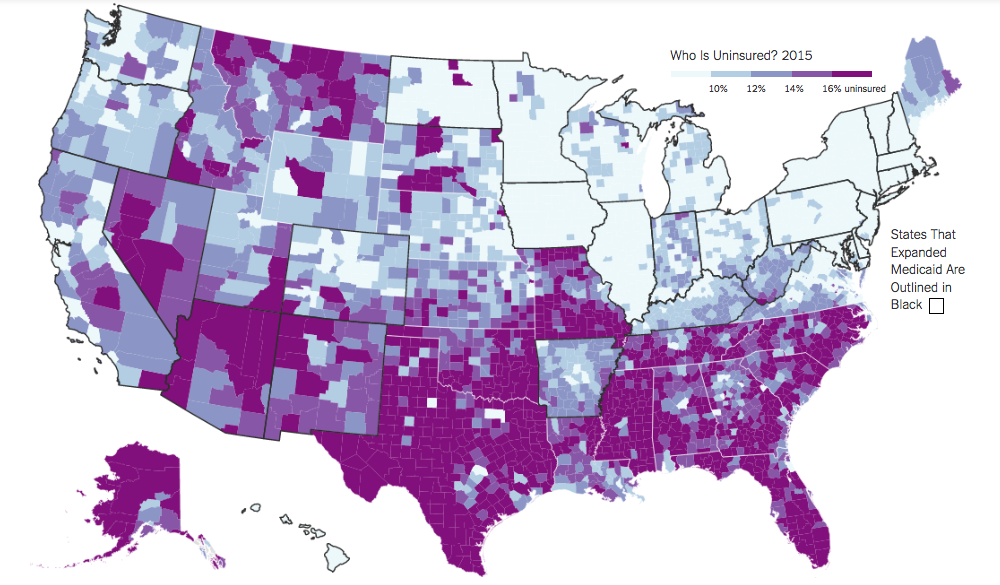Middle-aged white Americans have been dying at an accelerating rate for the last fifteen years. This is surprising to, well, pretty much everyone. Perhaps you heard it on the news. Almost immediately after winning the 2015 Nobel Prize in economics, Angus Deaton and Anne Case dropped this bombshell finding in the Proceedings of the National Academy of Sciences. And the nation, appropriately, was alarmed.
Now, the first thing I should say is that I’m not an expert on death. I’m not a clinician or even a health policy expert. But from my career in housing research, I can tell you something about death that hasn’t often been reported in the news: Where you live has a significant effect on how long you live.
Clarity on this issue came for me during my time serving at the Department of Housing and Urban Development. There, I spent many hours with Ron Sims, who was Deputy Secretary at the time. Sims had worked with local leaders in King County to show that you could predict health outcomes by the ZIP code someone lived in.. He brought this notion to HUD and, under his leadership and that of the then-Secretary Shaun Donovan, the phrase “the best predictor of a person’s life outcomes shouldn’t be the ZIP code one lives in” became a departmental mantra. Sadly, today it often is. Obesity, illness, morbidity – they all vary significantly with where you live.
There were signs of trouble before the news of Case and Deaton’s research broke.
Last week, the New York Times ran an article with the headline, “Small Towns Face Rising Suicide Rates.” The victims and their communities had a lot in common. The article quoted one psychologist who pointed out that rural areas tend to have “lower incomes, greater isolation, family issues and health problems.” In fact, if you located those counties on a map published by the Times a few days earlier, you would find most of them in areas where an unusually high percentage of the population still don’t have health insurance. If you dug a little deeper, you would also find, as the Times did, “that 55 percent of counties in the United States—all of them rural—do not have a single psychologist, psychiatrist or social worker.”

A couple days later, economists at the Federal Reserve Bank of New York published a map of their own, showing the average life expectancy in each county. Aside from the choice of colors, it was nearly identical to the health insurance map. If you lived in the healthier counties, you could expect to live a full decade longer than you’d live in others.
I’ll say it again: Where you live has a significant effect on how long you live.
Housing researchers have known this fact for some time. A large body of evidence shows all the ways that your home, your neighborhood, and your environment affect your health. In the last year alone, studies have found that higher rent costs lead to worse health; more violent neighborhoods lead to higher rates of depression; moving to a better neighborhood tends to reduce obesity; more environmentally friendly neighborhoods lead to better health for the sickest residents; and crucially in light of Angus Deaton’s latest findings, we have known for over a decade that families who move to low-poverty neighborhoods experience better mental health.
“Where you live has a significant effect on how long you live.”TWEET THIS
Some of these objectives are economically and politically difficult to achieve, but some are as simple as building better homes. Just last month, researchers at the Harvard School of Public Health reported that people living in environmentally friendly homes were significantly less likely to experience “sick building syndrome” – dizziness, itching, and sneezing fits due to hazardous chemicals, mold, and poor ventilation.
The effects are particularly acute in children. The Harvard researchers found that kids in “green” homes were less than half as likely to experience symptoms of asthma and 75 percent less likely to be hospitalized or miss school for asthma attacks. And it’s not just green homes. Another recent study shows that kids’ brains develop better when they’re exposed to more green space and less air pollution. Yet another shows that spending more than 30 percent of a family’s income on housing can impair their children’s cognitive achievement.
These effects can last a lifetime.
In discussing the research, Deaton told the press, “Drugs and alcohol, and suicide…are clearly the proximate cause.” Note the word proximate. Drugs and alcohol don’t walk up to strangers and kill them in the street. Something leads people to drugs and alcohol, and suicide. They may be the proximate cause. Something else is the ultimate cause.
I don’t know the underlying reason that mortality has ticked up in middle-aged white Americans. At the moment, nobody does. But I do know that these victims are not distributed equally across the country. This kind of suffering is far more pervasive in homes that lack the resources and the support system to combat the illness before it’s too late.
We can start by building better homes. And then, better neighborhoods. And eventually, block by block, a better, stronger, healthier nation.

This article is written by Dr. Raphael Bostic. He is the Judith and John Bedrosian Chair in Governance and the Public Enterprise at the Sol Price School of Public Policy at the University of Southern California.
Photo Credits:
Wizard of Oz The movie “The Wizard of Oz” directed by Victor Fleming, adapted from the book by L. Frank Baum. Initial theatrical wide release August 25, 1939. Screen capture. © 1939 Loew’s Inc. Credit: © 1939 Loew’s Inc. / Courtesy Pyxurz.